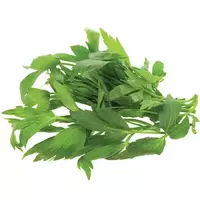Lubistok

Lubistok or Levisticum belongs to perennial plants from the Umbrella family. The only representative of this species is a drug lover. In addition to the official and scientific name of the plant, there are a number of folk names of the lover - zorya, love potion, lover, lover, libistic joi love grass. In the natural habitat of amateurs grows only in Iran and Afghanistan. Nowadays, amateurs are actively cultivated around the world.
Usually the lovetail plant does not exceed 150 cm in height. The lovetail leaves are wide, in the shape of a feather. The plant blooms with an inflorescence in the form of a spreading umbrella, which consists of small white flowers. A specific smell is considered a distinctive property of a lover. Celery is thought to be closest to the lovestock in its taste and aroma characteristics. That is why lovers are often called winter celery. The useful properties of lovestock lie in the chemical composition of the plant.
The benefits of love
All components of lovistok contain essential oil, which is rich in the content of useful natural compounds. In addition to essential oils, the plant rhizome contains organic acids, minerals and tannins, as well as sugar and starch. Green lovelorn leaves are enriched with ascorbic acid. Lubistok has long been used in folk medicine. Infusions and decoctions from a lover can arouse appetite. In addition, the benefits of love are expressed in diuretic and homeopathic effects on the human body.
As a result of the last research, the benefits of lovestok in the treatment of malblood, inflammatory processes, migraine, as well as alcohol dependence were revealed. It is believed that lovers are able to have a beneficial and relaxing effect on the human nervous system. Doctors argue that frequent consumption of amateur greens helps maintain the immunity of the human body and minimizes the risk of contracting colds and viral diseases.
Lubistok essential oil is used in cooking and pharmacological production. Fresh green lovistok leaves are used for confectionery, marinades and various drinks. Amateur greens are added to vegetable salads, as well as meat and fish dishes. Lubistok is perfectly combined with rice and other cereals, as well as meat, fish, game. Often, lovers are added to sauces in order to give the final product a distinctive taste and a sharp, richly spicy aroma of the plant. The roots of the amateur are used in cooking as a spice.
In addition, green oil is made from the rhizome of a lover, and roots are also added to salads and sauces that are served to meat dishes. Lubistok belongs to healthy and at the same time dietary foods. Along with dill and parsley, lovebirds are a must-have ingredient in the treatment menu for kidney, gallbladder and liver diseases. Nutritionists do not unreasonably believe that regular consumption of amateur food helps to normalize digestive and metabolic processes, which contribute to improving digestion and, as a result, normalizing weight.
amateur 20 kKal
Energy value of a lover (Ratio of proteins, fats, carbohydrates - ju):
Proteins: 3.7 g (~ 15 kCal)
Fats: 0.4 g (~ 4 kCal)
Carbohydrates: 7.6 g (~ 30 kCal)
Energy ratio (bj | y): 74% | 18% | 152%
 Español
Español Français
Français Português
Português Русский
Русский 简体中文
简体中文 繁體中文
繁體中文 日本語
日本語 한국어
한국어 العربية
العربية Türkçe
Türkçe Қазақ
Қазақ Deutsch
Deutsch Italiano
Italiano Українська
Українська
